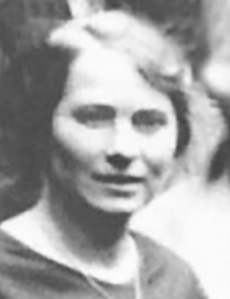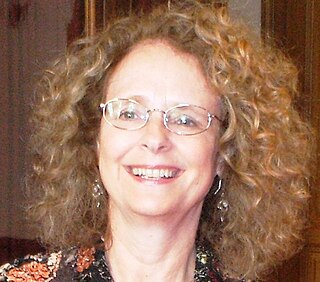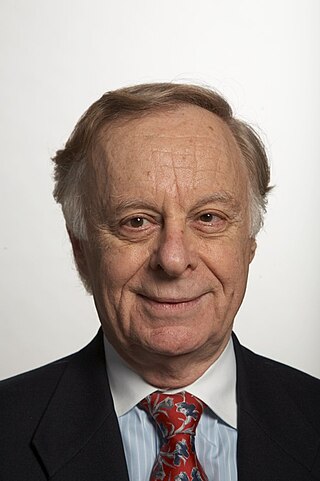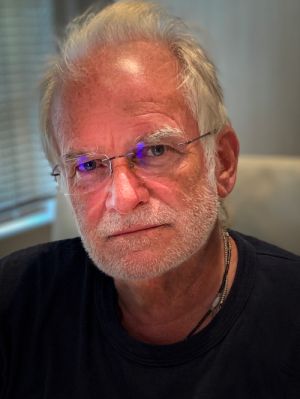Psychoanalysis is a set of theories and therapeutic techniques that deal in part with the unconscious mind, and which together form a method of treatment for mental disorders. The discipline was established in the early 1890s by Sigmund Freud, whose work stemmed partly from the clinical work of Josef Breuer and others. Freud developed and refined the theory and practice of psychoanalysis until his death in 1939. In an encyclopedic article, he identified the cornerstones of psychoanalysis as "the assumption that there are unconscious mental processes, the recognition of the theory of repression and resistance, the appreciation of the importance of sexuality and of the Oedipus complex." Freud's colleagues Alfred Adler and Carl Gustav Jung developed offshoots of psychoanalysis which they called individual psychology (Adler) and analytical psychology (Jung), although Freud himself wrote a number of criticisms of them and emphatically denied that they were forms of psychoanalysis. Psychoanalysis was later developed in different directions by neo-Freudian thinkers, such as Erich Fromm, Karen Horney, and Harry Stack Sullivan.

Sándor Ferenczi was a Hungarian psychoanalyst, a key theorist of the psychoanalytic school and a close associate of Sigmund Freud.
Psychoanalytic theory is the theory of personality organization and the dynamics of personality development relating to the practice of psychoanalysis, a clinical method for treating psychopathology. First laid out by Sigmund Freud in the late 19th century, psychoanalytic theory has undergone many refinements since his work. The psychoanalytic theory came to full prominence in the last third of the twentieth century as part of the flow of critical discourse regarding psychological treatments after the 1960s, long after Freud's death in 1939. Freud had ceased his analysis of the brain and his physiological studies and shifted his focus to the study of the psyche, and on treatment using free association and the phenomena of transference. His study emphasized the recognition of childhood events that could influence the mental functioning of adults. His examination of the genetic and then the developmental aspects gave the psychoanalytic theory its characteristics. Starting with his publication of The Interpretation of Dreams in 1899, his theories began to gain prominence.

Sabina Nikolayevna Spielrein was a Russian physician and one of the first female psychoanalysts. She was in succession the patient, then student, then colleague of Carl Gustav Jung, with whom she had an intimate relationship during 1908–1910, as is documented in their correspondence from the time and her diaries. She also met, corresponded, and had a collegial relationship with Sigmund Freud. She worked with and psychoanalysed Swiss developmental psychologist Jean Piaget. She worked as a psychiatrist, psychoanalyst, teacher and paediatrician in Switzerland and Russia. In a thirty-year professional career, she published over 35 papers in three languages, covering psychoanalysis, developmental psychology, psycholinguistics and educational psychology. Among her works in the field of psychoanalysis is the essay titled "Destruction as the Cause of Coming Into Being", written in German in 1912.
Stephen A. Mitchell was an American clinical psychologist and psychoanalyst. His book with Jay Greenberg, Object Relations in Psychoanalytic Theory (1983), became a classic textbook in graduate schools and post-graduate institutions, providing a general overview and comparison of several psychoanalytic theories. He was considered a leader of relational psychoanalysis. Mitchell helped to create the Relational Track of the New York University Postdoctoral Program in Psychotherapy and Psychoanalysis.
Resistance, in psychoanalysis, refers to the client's defence mechanisms that emerge from unconscious content coming to fruition through process. Resistance is the repression of unconscious drives from integration into conscious awareness.
Psychoanalytic dream interpretation is a subdivision of dream interpretation as well as a subdivision of psychoanalysis pioneered by Sigmund Freud in the early 20th century. Psychoanalytic dream interpretation is the process of explaining the meaning of the way the unconscious thoughts and emotions are processed in the mind during sleep.

Jessica Benjamin is a psychoanalyst known for her contributions to psychoanalysis and social thought. She is currently a practicing psychoanalyst in New York City where she is on the faculty of the New York University Postdoctoral Psychology Program in Psychoanalysis and Psychotherapy, and the Stephen Mitchell Center for Relational Studies. Jessica Benjamin is one of the original contributors to the fields of relational psychoanalysis, theories of intersubjectivity, and gender studies and feminism as it relates to psychoanalysis and society. She is known for her ideas about recognition in both human development and the sociopolitical arena.

Personality systematics is a contribution to the psychology of personality and to psychotherapy summarized by Jeffrey J. Magnavita in 2006 and 2009. It is the study of the interrelationships among subsystems of personality as they are embedded in the entire ecological system. The model falls into the category of complex, biopsychosocial approaches to personality. The term personality systematics was originally coined by William Grant Dahlstrom in 1972.
The term "intersubjectivity" was introduced to psychoanalysis by George E. Atwood and Robert Stolorow (1984), who consider it a "meta-theory" of psychoanalysis. Intersubjective psychoanalysis suggests that all interactions must be considered contextually; interactions between the patient/analyst or child/parent cannot be seen as separate from each other, but rather must be considered always as mutually influencing each other. This philosophical concept dates back to "German Idealism" and phenomenology.
Philip M. Bromberg was an American psychologist and psychoanalyst who was actively involved in the training of mental health professionals throughout the United States.

Lewis Aron was an American psychoanalyst and psychotherapist, teacher and lecturer on psychotherapy and psychoanalysis who made contributions particularly within the specialty known as relational psychoanalysis. Aron was the Director of the New York University Postdoctoral Program in Psychotherapy and Psychoanalysis in New York City. He was the founding president of the International Association for Relational Psychoanalysis and Psychotherapy and was formerly President of the Division of Psychoanalysis of the American Psychological Association. He was board certified in psychoanalysis by the American Board of Professional Psychology (ABPP) and a Fellow of the American Board of Psychoanalysis (FABP). His 1996 volume A Meeting of Minds: Mutuality in Psychoanalysis and his (1999) edited volume with Stephen Mitchell, Relational Psychoanalysis: The Emergence of a Tradition are considered two of the essential texts in contemporary American psychoanalysis. Together with Adrienne Harris, he edited the Relational Perspectives Book Series, which has published many of the texts in the field. Aron was one of the founders of the journal Psychoanalytic Dialogues: The International Journal of Relational Perspectives.
Joseph J. Sandler was a British psychoanalyst within the Anna Freud Grouping – now the Contemporary Freudians – of the British Psychoanalytical Society; and is perhaps best known for what has been called his 'silent revolution' in re-aligning the concepts of the object relations school within the framework of ego psychology.

Henry Zvi Lothane is a Polish-born American psychiatrist, psychoanalyst, educator and author. Lothane is currently Clinical Professor at Icahn School of Medicine at Mount Sinai, New York City, specializing in the area of psychotherapy. He is the author of some eighty scholarly articles and reviews on various topics in psychiatry, psychoanalysis and the history of psychotherapy, as well as the author of a book on the famous Schreber case, entitled In Defense of Schreber: Soul Murder and Psychiatry. In Defense of Schreber examines the life and work of Daniel Paul Schreber against the background of 19th and early 20th century psychiatry and psychoanalysis.

Barnaby B. Barratt is a radical psychoanalyst, specialist in human sexuality, somatic psychologist, human rights activist and practitioner of meditation in the Dharmic traditions of tantra. He has lived in England, India, USA and Thailand and he currently lives and practices in Johannesburg, South Africa. He is Director of Studies at the Parkmore Institute.
Jon Mills is a Canadian philosopher, psychoanalyst, and clinical psychologist. His principle theoretical contributions have been in the philosophy of the unconscious, a critique of psychoanalysis, philosophical psychology, value inquiry, and the philosophy of culture. His clinical contributions are in the areas of attachment pathology, trauma, psychosis, and psychic structure.
The Goethe Award for Psychoanalytic and Psychodynamic Scholarship is given annually by the Section on Psychoanalytic and Psychodynamic Psychology of the Canadian Psychological Association. The award is given for the best psychoanalytic book published within the past two years and is juried by a peer review process and awards committee.

Jeremy David Safran was a Canadian-born American clinical psychologist, psychoanalyst, lecturer, and psychotherapy researcher. He was a professor of psychology at the New School for Social Research, where he served for many years as director of clinical training. He was also a faculty member at New York University's postdoctoral program in psychoanalysis and The Stephen A. Mitchell Center for Relational Studies. He was co-founder and co-chair of The Sandor Ferenczi Center at the New School for Social Research. In addition he was past-president of The International Association for Relational Psychoanalysis and Psychotherapy.
Jay R. Greenberg is a psychoanalyst, clinical psychologist and writer. He holds a PhD in Psychology from New York University. He is a Faculty Member of the William Alanson White Institute, where he is also a training analyst and supervisor.
Robin S. Brown is a psychoanalyst and academic. His work has been associated with a “philosophical turn” in psychoanalysis, and has received interdisciplinary attention in the fields of psychoanalysis, analytical psychology, and transpersonal psychology. He is the recipient of an award from the American Board and Academy of Psychoanalysis for his book, Psychoanalysis Beyond the End of Metaphysics: Thinking Towards the Post-Relational (Routledge). Joseph Cambray, president of the International Association of Analytical Psychology, described the book as: "A powerful, incisive critical analysis of the state of contemporary psychoanalysis"; while Lewis Aron referred to the book as "a penetrating and sophisticated critique"








